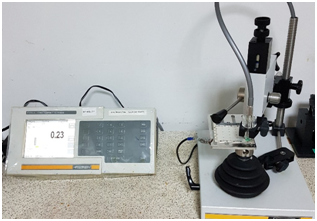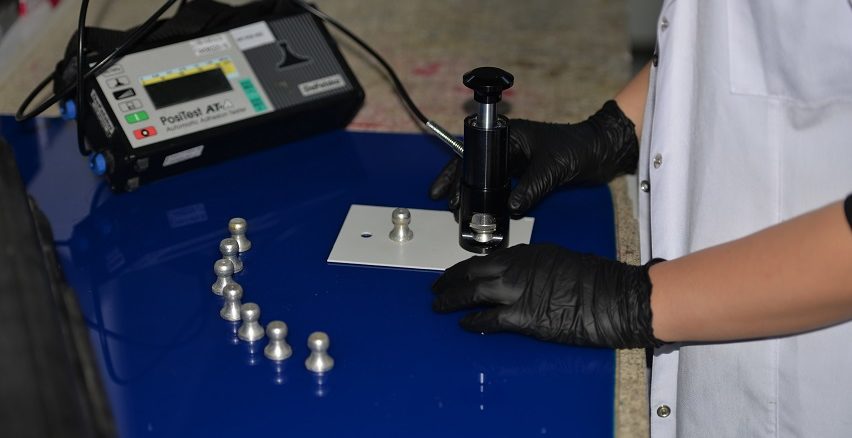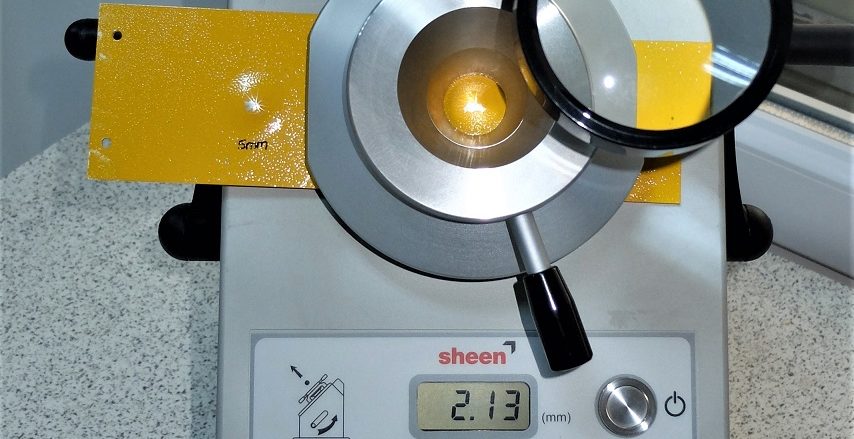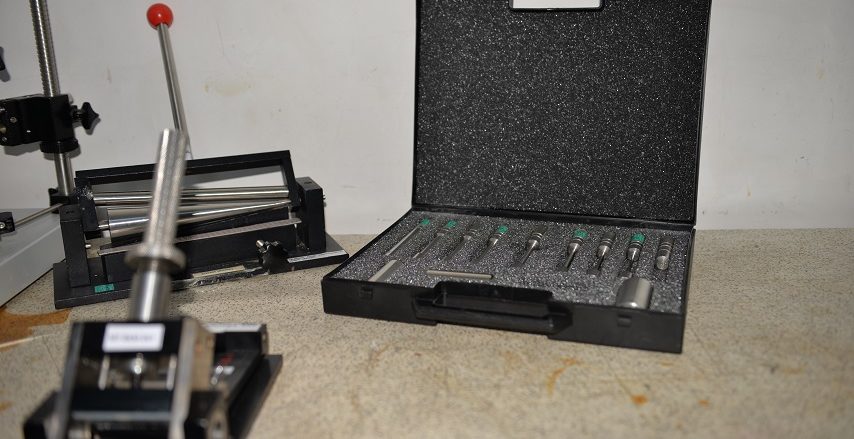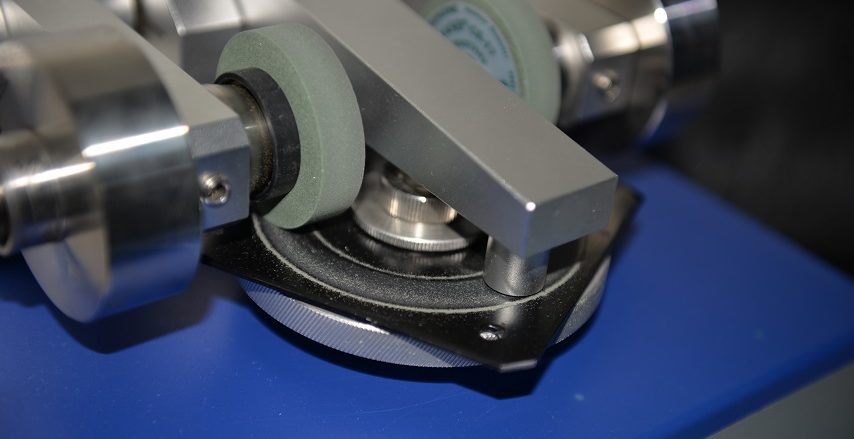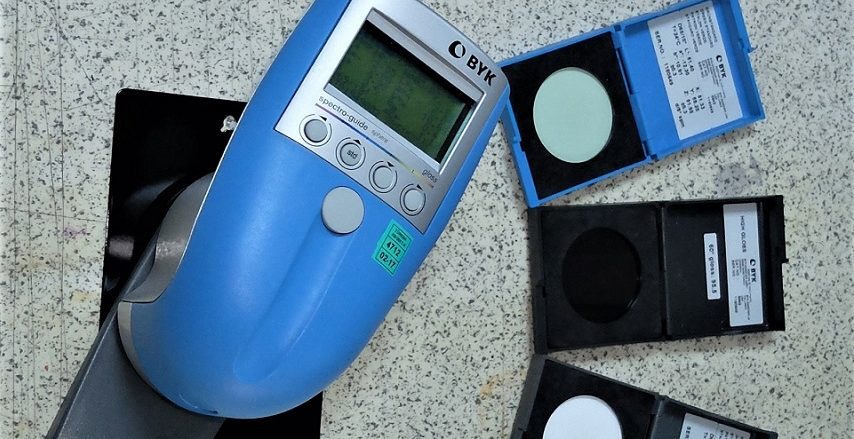RESISTANCE TO MECHANICAL TESTS
- EN ISO 2808/EN ISO 2178/EN ISO 2360
- Determination of Film Thickness with Eddy Current or Magnetic Method

MAGNETIC METHOD; specifies a method for non-destructive measurements of the thickness ofnon-magnetizable coatings on magnetizable base metals. The measurements are tactile and non-destructive on typical coatings.The probe or an instrument with integrated probe is placed directly on the coating to be measured. The coating thickness is displayed on the instrument.The magnetic flux density close to a magnetic field source (permanent magnet or electromagnet)depends on the distance to a magnetizable base metal. This phenomenon is used to determine thethickness of a non-magnetic coating applied to the base metal.
EDDY CURRENT; For non-destructive measurements of the thickness of non-conductivecoatings on non-magnetic electrically conductive base metals, using amplitude-sensitive eddy-currentinstruments will work. The probe or an instrument with integrated probe is placed directly on the coating to be measured. The coating thickness is displayed on the instrument
- EN ISO 2409 / ASTM D3359
- Cross Cut (Adhesion) Test

With this test method we can find the adhesion grade of the coatings with film thickness less than 250 µm. This test can be performed on coating systems or single coatings on metal, wood or soft substrates. Different cutting equipment will be used for different film thicknesses.
- EN ISO 4624/ASTM D 4541
- Pull-Off (Adhesion) Test

With this test method we can find the adhesion grade of the coatings with film thickness more than 250 µm. This test can be performed on coating systems or single coatings on metal, wood or soft substrates. Adhesion resistance will be given as Psi or MPa.
- ASTM D3170 / SAE J 400 / ISO 20567-1
- Resistance to Chipping (Stone-Chip) Test

With this test method, especially organic coatings are being tested by firing certain amount of steel pellets at certain pressure and time period at the test specimens. We evaluate the resistance to chipping of the coating.
- EN ISO 6272-1 / ASTM D2794 / EN 13523-5
- Rapid Deformation (Impact) Test

This method is to evaluate the resistance of a dry film of paint, varnish or relatedproduct to cracking or peeling from a substrate when it is subjected to a deformation caused by a fallingweight, with a 20-mm-diameter spherical indenter, dropped under standard conditions
- EN ISO 1520 / EN 13523-6
- Cupping Test

This test methodis being used for assessing the resistance of a coating of paint, varnish or related product to cracking and/or detachment from a metal substrate when subjected to gradualdeformation by indentation under standard conditions.
- EN ISO 1519 / ASTM D522
- Bend Test (Cylindricalor Conic)


This test method is being used for assessing the resistance of a coating of paint, varnish or related product to cracking and/or detachment from a metal or plastic substrate when subjected tobending round a cylindrical mandrel under standard conditions.
- EN ISO 2815
- Buchholz Indentation Test

This test method is being used for carrying out an indentation test on a single coating or multicoat system of paint, varnish or related product, using a Buchholz indentor. The length of the indentation produced is indicative of the residual deformation of the coating.
- EN 13523-4 / ASTM D3363
- Pencil Hardness Test
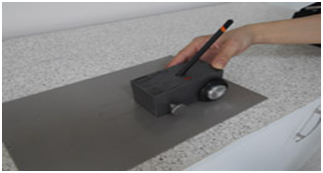
This method is to assess the relative hardness of an organic coating on ametallic substrate, by means of pencils of known hardness.Smooth surfaces will give more accurate results, but the method is also applicable for textured surfaces. Themore pronounced the texture, the greater the unreliability of results.
- Soft pencils: HB, B, 2B, 3B, 4B, 5B, 6B
- Hard pencils: F, H, 2H, 3H, 4H, 5H, 6H
- EN ISO 1518-1 / EN 13523-12
- Scratch Test

This test method is being used for determining under defined conditions the resistance of asingle coating or a multi-coat system of paint, varnish or related product to penetration by scratching with ascratch stylus loaded with a specified load. Penetration of the stylus is to the substrate, except in the case of amulti-coat system, in which case the stylus can penetrate either to the substrate or to an intermediate coat.
- EN ISO 2813 / ASTM D523 / EN 13523-2
- DIN 11664-4 / ISO 7668 /
- Gloss and Color Measurement Tests
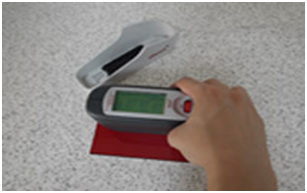
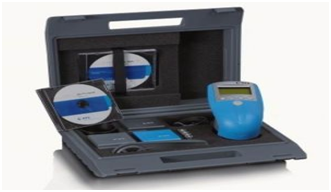
Gloss value is being determined by using reflectometer and gloss value can be determined in three different geometries: 20°, 60° or 85. Also with the help of color spectrometer, we can determine the L, A, B values and calculate the color change (∆E).
- EN ISO 7784-2 / EN ISO 9352
- Abrasion Test (Taber Method)
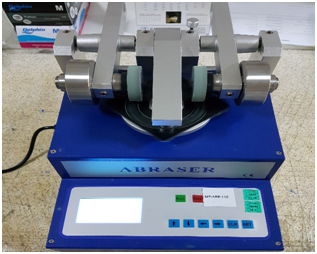
This method is being used for determining the resistance to abrasion of coatings, forwhich two loaded, freely rotatable but eccentrically arranged abrasive rubber wheels affect the coatingof the rotating test specimen. Results are given as g/m2.
- EN ISO 1522 / ASTM D4366
- Pendulum Damping Test
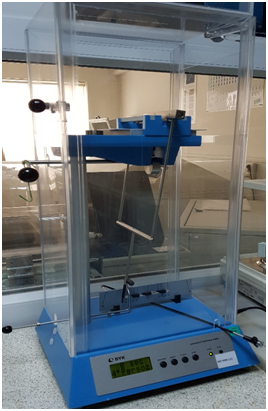
A pendulum resting on a coating surface is set into oscillation and the time for the oscillation amplitude to decrease by an amount and this amount is measured. The shorter the damping time, the lower the hardness.
- EN ISO 2177
- Measurement of Coating Thickness –Coulometric Method by Anodic Dissolution
